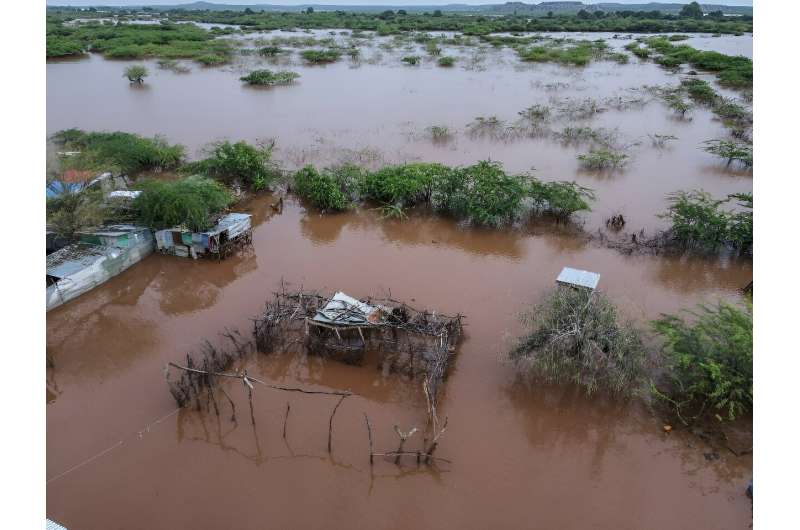This aerial view shows a general view of a flooded area in Dolow, Somalia following devastating floods on November 25.
State-of-the-art climate models drastically underestimate how much extreme rainfall increases under global warming, according to a study published Monday that signals a future of more frequent catastrophic floods unless humanity curbs greenhouse emissions.
It comes as countries prepare to meet at the COP28 summit in Dubai beginning later this week, amid fears it could soon be impossible to limit long-term warming to the 1.5 degrees Celsius scientists say is necessary to curb the worst effects of human-caused climate change.
Researchers from the Potsdam Institute of Climate Impact Research (PIK) looked at the intensity and frequency of daily precipitation extremes over land in 21 "next generation" climate models used by a UN body in its global assessments.
They then compared the changes projected by the models with those observed historically, finding that nearly all climate models significantly underestimated the rates at which increases in precipitation extremes scaled with global temperature rise.
"Our study confirms that the intensity and frequency of heavy rainfall extremes are increasing exponentially with every increment of global warming," said Max Kotz, lead author of the paper published in the Journal of Climate.
The changes track with the Clausius-Clapeyron relation in physics, which established that warmer air holds more water vapor. This finding underpinned the fact that temperature and not wind dominate the global change in extreme rainfall events, according to the authors.
Stronger increases in rainfall intensity and frequency were found across the tropics and high-latitudes, like in Southeast Asia or Northern Canada, according to the study.
"Extreme rainfall will be heavier and more frequent. Society needs to be prepared for this," said co-author Anders Levermann. "The good news is that this makes it easier to predict the future of extreme rainfall. The bad news is: It will get worse, if we keep pushing up global temperatures by emitting greenhouse gases."
More information: Maximilian Kotz et al, Constraining the pattern and magnitude of projected extreme precipitation change in a multi-model ensemble, Journal of Climate (2023). DOI: 10.1175/JCLI-D-23-0492.1
Journal information: Journal of Climate
© 2023 AFP
























